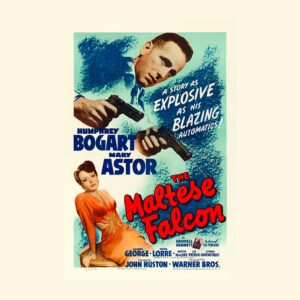
How We Mourn Our Dead Pets
A Brief History of Pet Cemeteries and Other Rituals
The following essay appears in the latest issue of Kill Your Darlings.
Ain Mallaha is the name given to a village built and settled by the Natufian culture between 10,000 and 8,000 BCE in the Eastern Mediterranean, in what is now Israel. The village was discovered and excavated in 1954. At one of its burial sites, archaeologists noticed how the bones of a woman’s hands rested over the remains of a puppy. In photographs taken at the site it is possible to see how the puppy’s spine has curled to fit exactly to the loose curve of the woman’s fingers. This, the first discovered instance of animal burial, was also the first physical evidence archaeologists had found of the relationship between humans and domesticated dogs. But while humans have lived with domesticated animals for tens of thousands of years, we have lived with pets for a relatively short time.
The word pet, in the sense of a child that is cherished or indulged, has been used commonly in English since the 15th century. It has also been used, since that time, in some Scots and Northern English dialects to mean a companion animal, usually a lamb raised by hand; this second meaning was not widely adopted until the 18th century.
Pets that served no practical or economic purpose didn’t popularly become part of the family unit until the Victorian era. It was around this time, in 1818, that the noun “pet” was first used as the verb, “to pet,” meaning to stroke or to fondle. It was the Victorians, with their cherished, stroked and indulged pets, who established the first pet cemeteries.
The earliest such cemetery was the Pet Cemetery of Hyde Park, established by way of a personal favor granted by a Mr. Winbridge, the park’s gatekeeper, to the Lewis Barnes’, a family who regularly visited the park with their two dogs. When the Lewis Barnes’s Maltese Terrier, Cherry, died, Winbridge agreed to bury her in a small green section of the park’s grounds. Her grave is marked with a tombstone inscribed, “Poor Cherry. Died April 28. 1881.”
At the time of Cherry’s burial, the interment of animal remains in public spaces was illegal. The corpses of most animals, pets included, were dropped into the street for collection with garbage, or they were burnt. But this was a time, too, when the pet, and the meaningful—even “human”—nature of the relationship owners perceived to share with their pets, was becoming enshrined in the Victorian home.
With Cherry’s burial private perceptions of the pet and of the bonds between pet and owner began to be codified in the public sphere. By 1903, when Hyde Park’s Pet Cemetery was closed down by the city, upwards of 300 pets had been buried there.
Hartsdale Pet Cemetery, in New York State, is the world’s oldest operating pet cemetery. It was founded in 1886 when a vet offered to bury his client’s beloved dog in his apple orchard in Westchester County. The number of pets buried there increased with each year; the ways they were memorialized became more elaborate, echoing the ornamentation and rituals of human cemeteries.
In 1915, 34 years after Cherry’s simple stone was placed in Hyde Park’s Pet Cemetery, Hartsdale’s first mausoleum was erected. The 50-ton structure, made from granite and marble, now houses the remains of five spaniels who once belonged to a Mrs. MF Walsh. The inscription over its door reads: “My Little True Love Hearts, Who Would Lick the Hand That Had No Food to Offer.”
In 1923, Hartsdale erected the War Dog Memorial to memorialize the thousands of dogs killed in WWI, the first tribute of its kind to military dogs. With the dedication of the War Dog Memorial, the cemetery’s function, as a place where animals were commemorated privately, opened to invite visitors to the cemetery to extend their empathy to the suffering and loss of animals besides their own pets.
Today, Hartsdale is home to the remains of some 80,000 animals. Monkeys, horses, birds, fish, a lion cub, as well as cats and dogs, and pets belonging to celebrities like Mariah Carey and Diana Ross, are all buried there. Hartsdale offers a wide selection of caskets and monuments. Packages for plots, caskets and interments start at just under $1,800. Approximately 700 funerals are held in its grounds every year. On its website, imprinted over a photograph of the cemetery’s green rolling fields, is Hartsdale’s slogan: The Peaceable Kingdom.
Cimetière des Chiens in Asnières-sur-Seine, a suburb in the north of Paris, was the first pet cemetery to be formally established with government approval; maybe this is why it eschews “pet cemetery” for the more formal title “animal necropolis.” It was founded in 1899 by an attorney, Georges Harmois, and Marguerite Durand, the actress and journalist.
Durand was renowned as a pioneering feminist and notorious for her flamboyance. She was, perhaps, never more flamboyant than when she allowed her pet lion, Tigre, to accompany her while she campaigned for political office. Tigre is buried in the cimetière. Another of the necropolis’s notable inhabitants is Rin Tin Tin, the German Shepherd who starred in 27 Hollywood movies and who was, in fact, a contender for the first best actor Academy Award in 1929—at least until the Academy decided that only human actors should be eligible to win. Rin Tin Tin’s burial in Paris was also a return home, of sorts: the German Shepherd was first discovered on a French battlefield in WWII, by American solider Lee Duncan.
* * * *
In the space, and the rituals, of the pet cemetery, bereaved pet owners take comfort in replicating modes of human mourning to mark the loss of their animals. Memorial taxidermy, on the other hand, proposes a mode of mourning starkly different to any human practice.
This form of taxidermy, where a dead pet is stuffed and mounted in, arguably, a lifelike pose, originates, like the pet cemetery, in the Victorian era. This was a time when taxidermy of all types enjoyed popularity, when taxidermy and taxidermied animals were broadly aligned with, and gestured towards, science and learning even when they weren’t specifically put to these purposes, and when stuffed animals were just as likely to be found in middle-class homes as they were in museums or hunting lodges. It was a time, too, when the vocabulary and practices of mourning became increasingly ornate. It was common for the bereaved to create or commission souvenirs of the dead, by which to remember them. Post-mortem photographs were a common souvenir, in which the deceased was photographed, usually on its deathbed, often surrounded by flowers, and sometimes surrounded by family posed stiffly about its corpse.
Mourning jewelry, too, was popular. Mourning lockets could contain snippets of the deceased’s hair—if the hair was abundant enough, it could be plaited and fashioned into a bracelet or necklace. We tend not to commemorate the dead in this way now. Some banner ads, though, running at the sides of pet loss forums, advertised services where the cremated remains—or cremains—of a lost pet could, for a small fee, be melted down and incorporated into a souvenir: a memorial stained-glass window, or a piece of jewelry, such as a bracelet or ring.
Memorial taxidermy, too, makes a souvenir through which owners can remember their dead pets. As taxidermist Rachel Poliquin points out, however, while a souvenir such as a mourning locket contains a part of the deceased, memorial taxidermy presents “the whole souvenir”: the dead animal is transfigured into an eternal reminder of itself.
It is hard to imagine that the bereaved owners who arrange for their pets to be preserved in this way act from anything other than grief for and love of the animal they have lost; it can be equally hard to contemplate the finished product without discomfort. A stuffed pet, says Poliquin, “presents a frightening categorical confusion. If the pet were human, taxidermy would be unthinkable.”
* * * *
The latest technology in pet preservation, freeze-drying, claims to achieve a level of lifelikeness that memorial taxidermy cannot. In taxidermy, the dead pet is skinned and its skin is draped over a mount. In freeze-drying, the pet retains its own form, although its organs are removed and artificial fillers are injected in their place, and its real eyes are replaced with glass eyes. The pet’s corpse is posed, usually in a resting position, lying down and with its head resting on its paws. Once posed, it is placed in a sealed vacuum chamber for anywhere from 15 weeks, for a small cat, to six months, for a large dog, and freeze-dried.
Perpetual Pet, a Florida-based company offering the freeze-drying service, describes it as “a loving and lasting alternative to taxidermy.” The website includes a gallery of freeze-dried pets whose photos are captioned with client testimonials. The owners of Perpetual Pet have included their own cat, Naomi, described as a “beloved pet of 18 years” in the gallery. Another of these pets is a cat called Princess Snowflake. The testimonial accompanying her picture reads, in part “it isn’t the same of course, but I still have her” [italics mine].
Other testimonials echoed this idea, that the continued ownership of their pet offered comfort. We tend to understand the human-pet relationship in terms of ownership. We describe people as “having” or “keeping” pets; people who do “have” or “keep” pets are commonly referred to as “pet owners.” But in memorial taxidermy and freeze-drying, the idea that we own our pets becomes far more pronounced. Once the dead pet is stuffed or frozen it becomes an object, something that can be even more easily possessed than a tame animal. Through these processes, the bonds of ownership can extend even further than the limits of the animal’s lifetime, as this quote from “Perpetual Pet” proudly attests:
If not subjected to damage (dirt, spills, treatment, stains, weather, mistreatment, etc.) there should be no further change or deterioration. With a little care, your pet can be held, carried, transported, and even gently petted.
In the Perpetual Pet photo gallery, the owner of the dog Tiny writes, “The loss just isn’t so painful when you can look at the coat and feel the face of your dearest little friend.” In a relationship so much more physical than the relationships we have with humans—where wants and needs and moods are communicated through touch, and sometimes through the withholding of touch—it makes sense that the pet’s continued physical presence, in the form of a stuffed or frozen object, is comforting for some.
At the same time as the Victorians began to publicly mourn and commemorate their dead pets, so they imagined the ways in which their pets might mourn them. The story of the dog who returns home over great distances, or after great lengths of time, is one grown familiar. Victor Hugo’s dog is—probably apocryphally—said to have followed the author back to his home in Paris, after the two became separated in Moscow. In 1923, the story of Bobby the Wonder Dog, who traveled thousands of miles to return to his family’s home in Silverton, Oregon, after becoming separated from them on a cross-country road trip, captured the imaginations of Americans.
This narrative finds its ultimate expression in the story of Lassie, protagonist of Eric Knight’s story Lassie Come-Home and numerous subsequent films. In the story, a poor farmer in Depression-era England sells his family’s dog out of financial desperation. Lassie’s new master is rich but cold-hearted. She travels across Yorkshire to be reunited with the poorer, but more deserving, family that was forced to give her up.
These narratives ostensibly celebrate the qualities we ascribe to and admire most in our pets, and in dogs specifically: loyalty, affection, unswerving devotion. Fundamentally these stories are as much, or more, about humans than dogs; implicitly, they celebrate human qualities—of the masters who inspired the loyalty, who were deserving of the affection.
Even more emphatically than the story of the dog who returns to its master’s home, the story of the dog who mourns the death of its master is superficially a tribute to canine loyalty and implicitly also a tribute to the human who inspired it. Most popular among these narratives is the story of Greyfriars Bobby.
Bobby, a Skye Terrier, belonged to John Gray, a night watchman in the Scottish village of Greyfriars. Gray died and was buried in the Greyfriars Kirkyard. For the next 14 years, apparently, Bobby could not be persuaded to sleep anywhere but his master’s grave. The story of Bobby’s devotion to his master became known, first locally, then through its novelization by author Eleanor Atkinson, and then in the numerous adaptations that followed the novel’s success. A statue in the Greyfriars Kirkyard commemorates the story of Bobby and John Gray.
Similar statues commemorating similar stories can be found all over the world. Snake Gully, near Gundagai in rural New South Wales; Borgo San Lorenzo in Tuscany; and Shibuya in Tokyo, are all home to statues—of the “Dog on the Tuckerbox”; of Fido; of Hachiko—depicting dogs who distinguished themselves with public displays of grief for their dead masters. Of course, it’s impossible to know whether animals understand and experience grief in the way humans do, though some dogs have been observed to change their behaviors, including their patterns of eating and sleeping, following the death of a companion, either human or animal.
It’s impossible to disentangle the behavior of a dog like Hachiko, the Shiba Inu who waited at Shibuya train station for his master Hidesaburo Ueno’s return from work nine years after Ueno’s death, to determine how much of it should be attributed to emotion and how much to habit. The story of Greyfriars Bobby or of Hachiko reveal little about these animals’ perceptions of their masters and much about how we perceive ourselves—or how we wish to be perceived—through the eyes of our pets. The dog, in a cynical reading of this type of narrative, is not much more than a mirror reflecting back the excellent traits of its master.
But these stories, and the ostentatious displays of canine grief they center on, reveal and maybe even assuage the anxieties at the heart of the human-pet relationship. They tell us, in ways our pets cannot, that our pets understand and appreciate the significance of the relationships they share with us; that they reciprocate the feelings we have for them.
* * * *
The Victorian era, when we first began to mourn and commemorate our pets, marked the beginning of industrialization and the end of a time when animals were part of the fabric of our lives. Pets have been the exception to the steady absenting of animals from our everyday routines and, as a result, from our imaginations.
Pets still sit at the center of many homes, and many lives. With their presence, they remind us of our capacity to empathize with and, often, to love, animals. And with the miniature headstones and the sawdust-stuffed forms, the statues we make in their place, their absence reminds us of this capacity, too.
Jessica Miller
Jessica Miller is an Australian writer and PhD candidate currently based in Southern Germany.



















